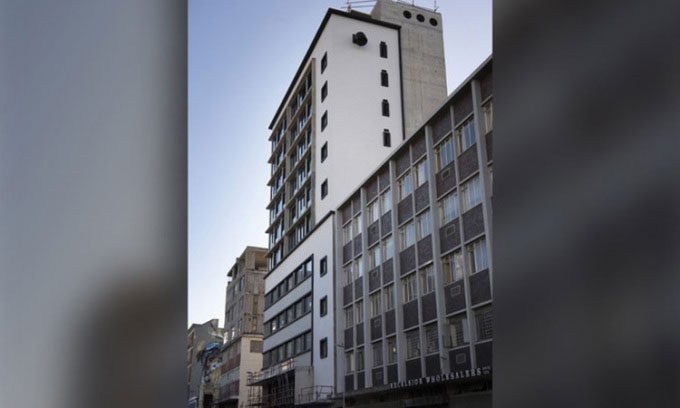The Hemp Hotel, a 12-story building with a stunning view of Cape Town’s majestic Table Mountain, is ranked as the tallest building made from hemp in the world.

Overview of the Hemp Hotel in Cape Town on April 25. (Photo: AFP).
Workers in downtown Cape Town are putting the finishing touches on the 54-room Hemp Hotel, which is expected to be completed by June, AFP reported on May 4. The walls of the building are constructed from hemp blocks combined with a concrete and cement structure. Steve Allin, director of the International Hemp Building Association in Ireland, has classified it as the “tallest building using hemp materials in the world.”
Hemp bricks are becoming increasingly popular in the construction industry due to their thermal insulation, fire resistance, and eco-friendliness. These bricks are carbon-negative, meaning their production process absorbs more carbon from the atmosphere than it emits.
“Hemp absorbs carbon, which is then incorporated into the bricks and stored in a building for 50 years or more,” explained Boshoff Muller, director of Afrimat Hemp, a subsidiary of the South African construction group Afrimat and the manufacturer of hemp bricks for the hotel. At the brick factory located in the suburbs of Cape Town, hemp fibers, water, and lime are mixed together to create the building blocks.
Industrial hemp used for the Hemp Hotel must be imported from the UK because South Africa prohibits local cultivation. However, last year, the government began allowing hemp farming.
Afrimat Hemp is preparing to produce the first hemp bricks made from South African hemp. The architect of the Hemp Hotel, Wolf Wolf, sees this as a game-changing factor that will help hemp buildings become more popular in the country. However, cost remains an issue. “Building with hemp is 20% more expensive than traditional materials,” noted Wihan Bekker, carbon consultant for Afrimat Hemp.
Nonetheless, in a world racing to reduce carbon emissions, Afrimat Hemp believes its green bricks still have significant potential. The company states that the carbon emissions of a 40m2 house built with hemp are three tons less than those of a traditional house.


















































